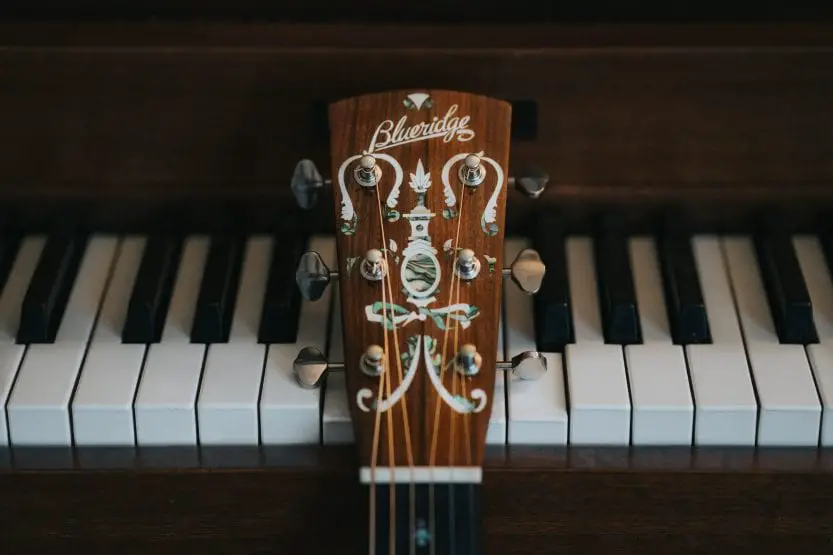Music is a language, like your mother tongue and even the English language. It’s composed of different components such as its keys, scales, notes, chords and the like. Let’s take, as an example, the English language. The language comes with rules, and its crucial component: the alphabet. The syntax of English allows communicating possible using the language.
Similarly, music has a standard theory that permits musicians to understand, learn, analyze and create music. If you have recently picked up a guitar and you want to play a song, a simple search can yield you a lesson in it. But, learning the music theory and how different keys and scales relate to each other, you will be able to learn and play music a lot faster.
What is Music Theory?
Crucial to identify that music was not created at the inception of music theory. It existed centuries earlier. It was a prominent method of communication between living beings even when they did not what music was. However, music theory is a practice that takes years for musicians to expertise. Here’s a brief that can help you learn the basics of music theory.
Music theory examines the fundamentals of music by defining the building blocks of a musical composition, including harmony, melody and rhythm. It helps you to identify the different elements that aid these compositional blocks which could be key signatures, notes, tempos, scales, etc.
What is Harmony?
Notes or voices playing simultaneously and complementing each other creates harmony. The three main elements that produce harmony: chord, chord progressions and vocals. There are two types of harmony:
- Dissonant: notes that do not sound well together but help create tension which is resolved by consonant chords.
- Consonant: notes are played in intervals that sound pleasing together and make for smooth transitions.
What is Melody?
The arrangement of notes or voices creating a musical phrase. The two main elements that produce a melody are pitch and rhythm. Among the types of melodies, you have to motions:
- Conjunct: notes move by whole or half steps.
- Disjunct: there are large gaps between notes.
What is Rhythm?
The audio vibration played by an instrument or voice is the pitch. It determines if the note will be low or high. The duration of these pitches is the rhythm which is further divided into notes, half notes, etc. Basic elements of rhythm are:
- Beat: a repetitive pulse of a musical phrase.
- Time Signatures: Number of beats in a given period.
- Syncopation: placing rhythmic accents to emphasize offbeats
- Accents: how strongly the note is played
- Tempo: the speed of the music being played
- Meter: The pattern of strong and weak beats

The Fundamentals of Music Theory
For any beginner, learning about these fundamentals of music theory will allow you to play any song you wish with ease. But before you do, you need to have a clear understanding of the compositional blocks of music. Read up as much as you can about music theory to get a clearer picture. For our present discussion, we will focus on two important fundamentals of music theory: keys and scales. Everything you need to know about keys and scales in music is right below.
A Brief about Musical Scales
Groups of notes played in or out of a sequence forms a musical scale. Illustrating further, imagine a singer doing vocal warm-ups. He is essentially practicing different scales. Most of us can complete a scale but many of us do not how that is possible. Like any other language, the music language is also composed of alphabets. If you consider each note as an alphabet of the language of music, a combination of that is a scale. There are two types of scales:
A. Major Scale:
The major scale is actually the first 7 letters of the English alphabet: A, B, C, D, E, F and G. The most popular major scale is the C scale which is arranged consecutively like: C, D, E, F, G and A. The trick to arranging the notes of a scale is to hook onto one note and arrange the rest consecutively. The white keys on a piano are the notes of major scales. There are about 12 major scales. They always sound happy and uplifting.
B. Natural Minor Scale:
There are general 12 types of minor scales as compared to the 12 major ones. They differ in their interval pattern. In comparison, the minor scale is dark, moody, and quite sad. For instance, if you rewrite the C major scale with A as your root note, it will be: A, B, C, D, E, F, G. That’s a natural A minor scale with different intervals.
Intervals
Imagine moving along the keys of a piano. When you press a white key and then a black key, this distance is called a half-step interval (H) or a semitone. This distance is called an interval. Two half-steps placed consecutively is a whole step interval (W) or two semitones. Major and minor scales have their unique interval pattern:
- Major scale: W-W-H-W-W-W-H
- Minor scale: W-H-W-W-H-W-W
It helps to memorize these interval patterns for the two different scales. For example, on a piano, C major scale will be played in the following steps:
- Play C on a white key.
- Skip the next black key and play D.
- Play the following 2 white keys for E and F.
- Skip the next black key and play G.
- Skip the next black key and play A.
- Skip the next black key and play B.
- Play the following white key for C.
Keys in Music
The scale at which a song or music is played in is the key. For example, a major key song is played in the major scale, and a minor key is played in the minor scale. So, a ‘key of C major’ is a song played in the C major scale. Here, the root note of the scale is C upon which the scale has been built on. It is also the root note of the key and is called a tonic.
The tonic is the center of the key. Music plays back and forth, transcend and contracts, to and from the tonic. This is what makes music interesting to the ear. The music’s center of rest or completion is the tonic. When a song has this centered sound it is called tonal or has tonality. Some songs are atonal and do not possess this quality.
Brief about Music Notes
Before we proceed, lets understand a little about musical notes. The white keys on a piano represent major keys or notes. The black keys play flat (♭) or sharp (#) notes, which is A#/B♭, C#/D♭, D#/E♭, F#/G♭, G#/A♭. Picture a piano and the C major scale. Ideally the C major has the following notes, but when played in the major scale interval pattern, you play the scale. The notes are: C, C#/D♭, D, D#E♭, E, F, F#G♭, G#A♭, A#B♭, B, C. Thumb rule: between notes E and F, and B and C, it is always a half-step.
How many music keys are there?
There are a total of 24 keys: 12 keys of the major scale, and 12 of the minor scale. There are 30 different spellings for them. You can memorize them in the following manner:
Circle of 5ths
Draw a circle and make 12 lines from the center to its circumference with equidistant. Write a key name on one part, count 5 steps clockwise and in the next step write its sharp or flat key. Do it until for all the 7 notes, both in major and sharp/flat versions. Three notes, B, C#, and F#, have two spellings each. These are enharmonic notes.
Circle of 4ths
Repeat the same as the above. This is simply a different musical interval.
Key Signatures
This helps you identify how many sharp and flat notes are in a key. There are exactly 12 signatures from 12 notes. It also helps identify the key of a song and its tonal center.
Conclusion
This is a brief of the music theory with which every musician needs to be familiar. This is a vast area of study and is often considered an art with no end. The article can help give you a jump-start to your musical journey, one that will be fruitful and enriching with practice. The music theory allows you to pick up songs and make music with ease. It is a beautiful play of keys and scales.
The circle diagrams can help you quickly learn the note progression of any scale with their respective interval pattern. It also teaches you key signatures of major and minor scales. For instance, except the C major scale, all scales use flat and sharp notes. The more you read about the music theory and the more you apply the knowledge on your musical journey, the more you will learn. All the greatest musicians in the world are continually learning about the music theory. Treat it like an infant learning his mother tongue rather than an academic course.



